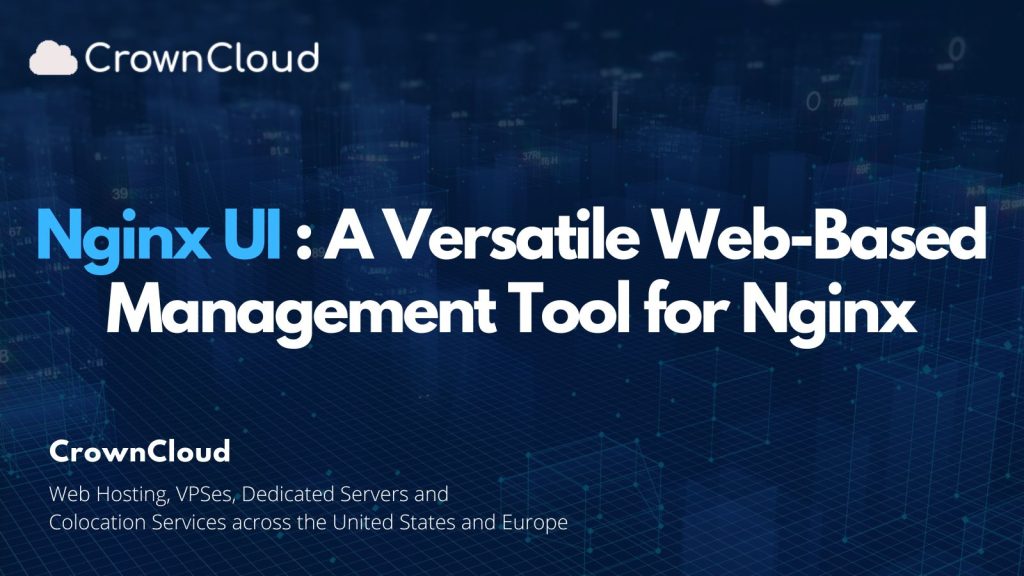Today’s Article Provides a Comprehensive Overview of Nginx UI
What is Nginx UI?
Nginx UI is a browser-based tool designed to make configuring and monitoring the Nginx web server straightforward and hassle-free. With its user-friendly interface, it allows administrators to efficiently handle tasks like managing server blocks, setting up SSL certificates, configuring reverse proxies, and more—eliminating the need for manual file editing.
This powerful utility is perfect for those looking to simplify their workflow and optimize server management processes.

Key Features of Nginx UI:
- User-Friendly Dashboard: Nginx UI features a clear, easy-to-use interface that provides a centralized location for managing all Nginx settings.
- Simplified Server Block Management: Easily create, modify, and delete server blocks (virtual hosts) for hosting multiple websites. Specify server names, document roots, and logging preferences in just a few clicks.
- SSL/TLS Made Easy: Integrate SSL/TLS certificates effortlessly, with built-in support for Let’s Encrypt. Automated certificate generation and renewal ensure your sites remain secure.
- Reverse Proxy Setup: Configure Nginx as a reverse proxy with ease. Manage upstream servers and optimize load balancing using straightforward settings.
- Real-Time Monitoring: Keep an eye on your server’s performance with live metrics, such as connection counts, request rates, and resource usage.
- Integrated Log Viewer: View error logs and access logs directly within the interface to simplify debugging and server issue resolution.
- Advanced Security Options: Enhance security with customizable firewalls, rate-limiting settings, and HTTP security headers like HSTS and Content-Security-Policy.
- Role-Based Access Control: Support for multiple users with role-specific permissions ensures secure and efficient management in team environments.
- Backup and Restore: Quickly back up your server’s configurations and restore them in case of misconfigurations or errors.
- Cross-Platform Compatibility: Nginx UI works on Linux, Windows, and macOS, and is accessible via modern web browsers, making remote management a breeze.
Advantages of Nginx UI:
- Ease of Use: Simplifies server management, reducing the need for manual configuration file editing.
- Real-Time Data: Offers live insights into server performance, enabling proactive issue identification and resolution.
- Minimal Impact: Runs efficiently, ensuring it doesn’t consume unnecessary resources while managing your server.
- Enhanced Security: Enables quick implementation of SSL/TLS and other security settings to protect your server.
- Customization: Provides options for advanced configuration via custom snippets, catering to specific use cases.
- Open Source: Nginx UI is free to use, with community-driven support and ongoing development.
Typical Requirements for Using Nginx UI
- Operating System: Compatible with Linux, Windows, and macOS systems.
- Browser: Requires a modern web browser (e.g., Chrome, Firefox, Safari, Edge) for accessing the web interface.
- Dependencies: Ensure Nginx is installed and running on your server.
- Disk Space and Memory: Minimal system resource requirements for installation and operation.
Installation on Linux OS (CentOS and Ubuntu based OS):
You can find installation instructions in the CrownCloud Wiki Guides, and it follows:
Purchase a KVM VPS – Choose a KVM VPS plan from us that suits your requirements.
KVM SSD Plans – https://crowncloud.net/ssd_kvm.php
NVMe SSD KVM VPS Plans – https://crowncloud.net/nvme_kvm.php
AMD Ryzen SSD KVM VPS – https://crowncloud.net/ssd_amd_ryzen_kvm.php
Intel i9 12900K SSD KVM VPS Plans – https://crowncloud.net/ssd_intel_i9_kvm.php